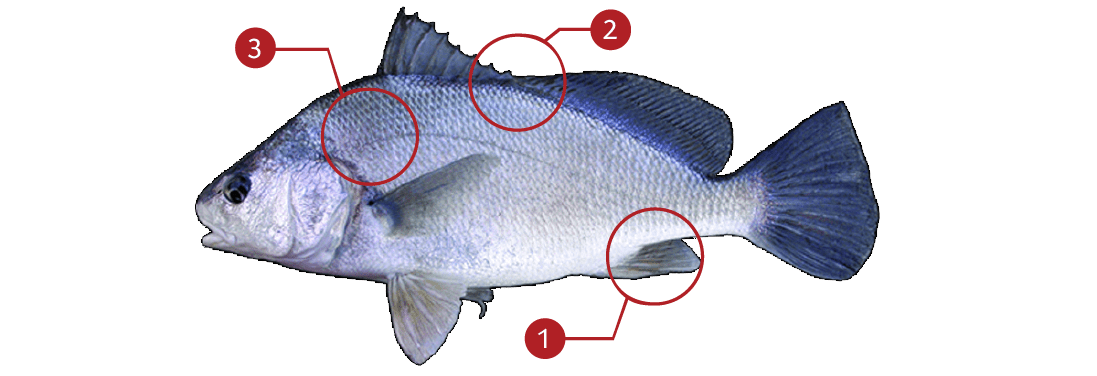FRESHWATER DRUM
How to identify a Freshwater Drum
Though it is a fairly distinctive fish, its deep body, humped back, blunt snout and subterminal mouth have led some to confuse it with the carp and the buffalos. It can be easily distinguished by its two dorsal fins (only one in the carp and buffalos) and its rounded, rather than forked tail. Also, the first dorsal fin of the freshwater drum is composed of 8-9 spines, whereas the carp has only one spine at the beginning of its single soft rayed dorsal fin and the buffalos have no spines at all.
Where to catch Freshwater Drum
The freshwater drum is the only North American freshwater representative of the Sciaenidae family which includes the croakers, corbinas, drums, seatrout, etc. It occurs over much of the U.S. between the Rockies andthe Appalachians southward through eastern Mexico to Guatemalas Rio Usumacinta system and northward through Manitoba, Canada, all the way to the Hudson Bay. It also occurs in some areas of Ontario, Quebec, and Saskatchewan.
IDENTIFICATION

| |
29–32 rays on anal fin |
| |
Deep bodied fish with a divided dorsal fin consisting of 10 spines |
| |
Gray or silvery in turbid waters and more bronze or brown colored in clearer waters |
TARGET AREAS
|
|
Acknowledgements: We thank TAKEMEFISHING.org (www.takemefishing.org), Wisconsin Department of Natural Resources, Indiana Department of Natural Resources for their contributions to these FISH FACTS.

